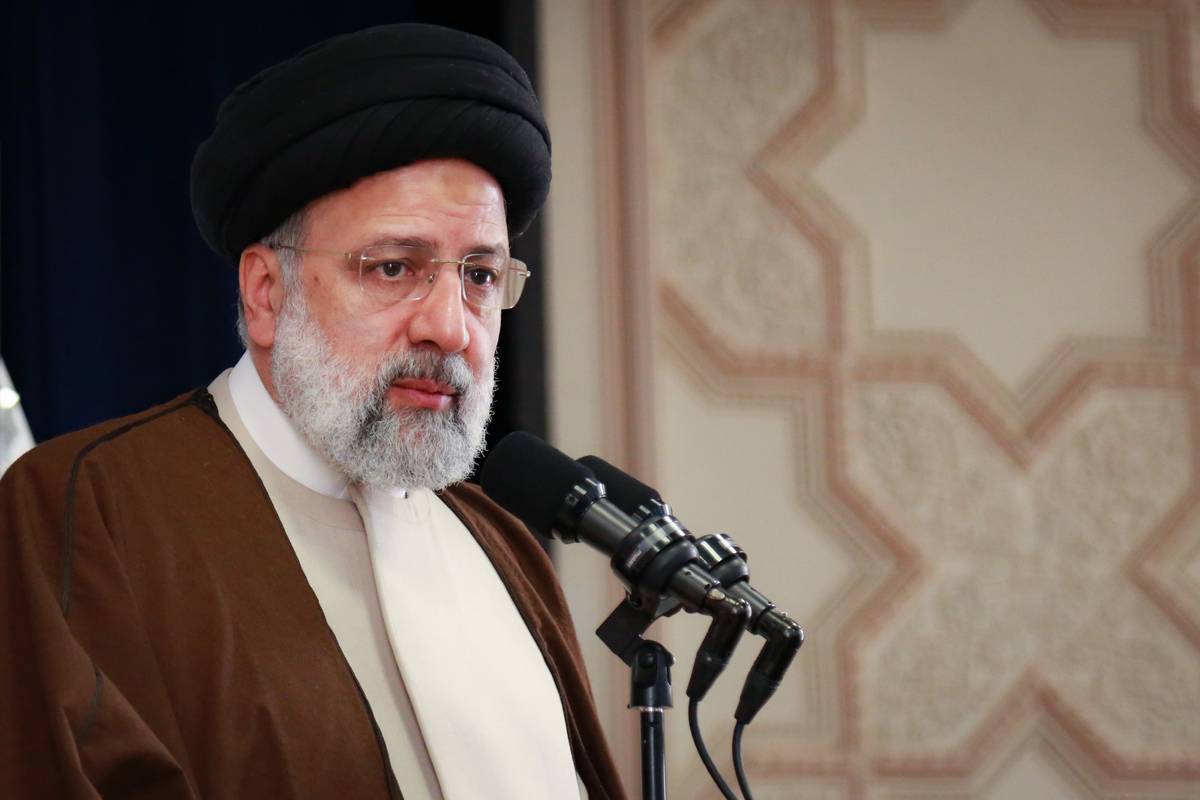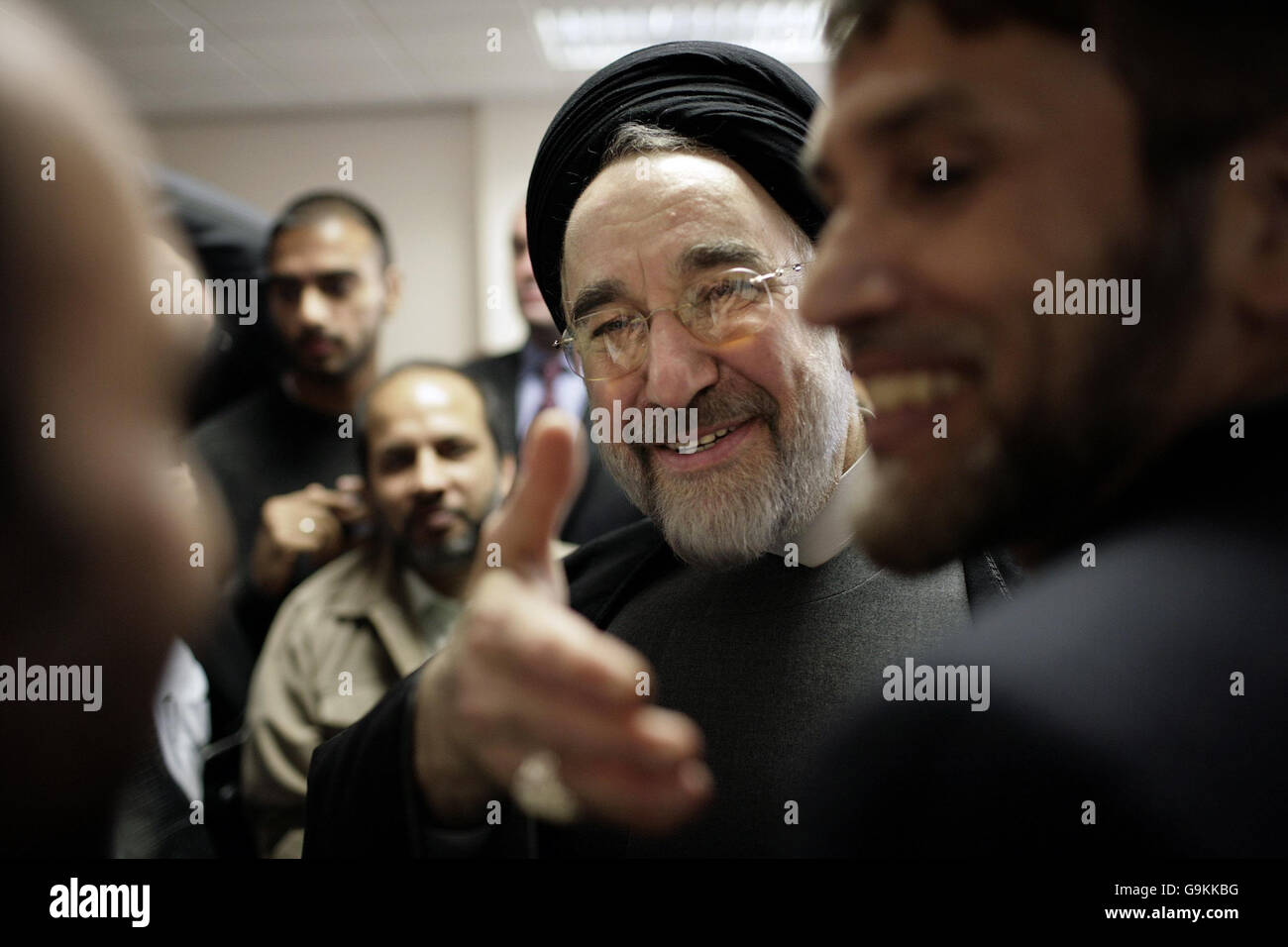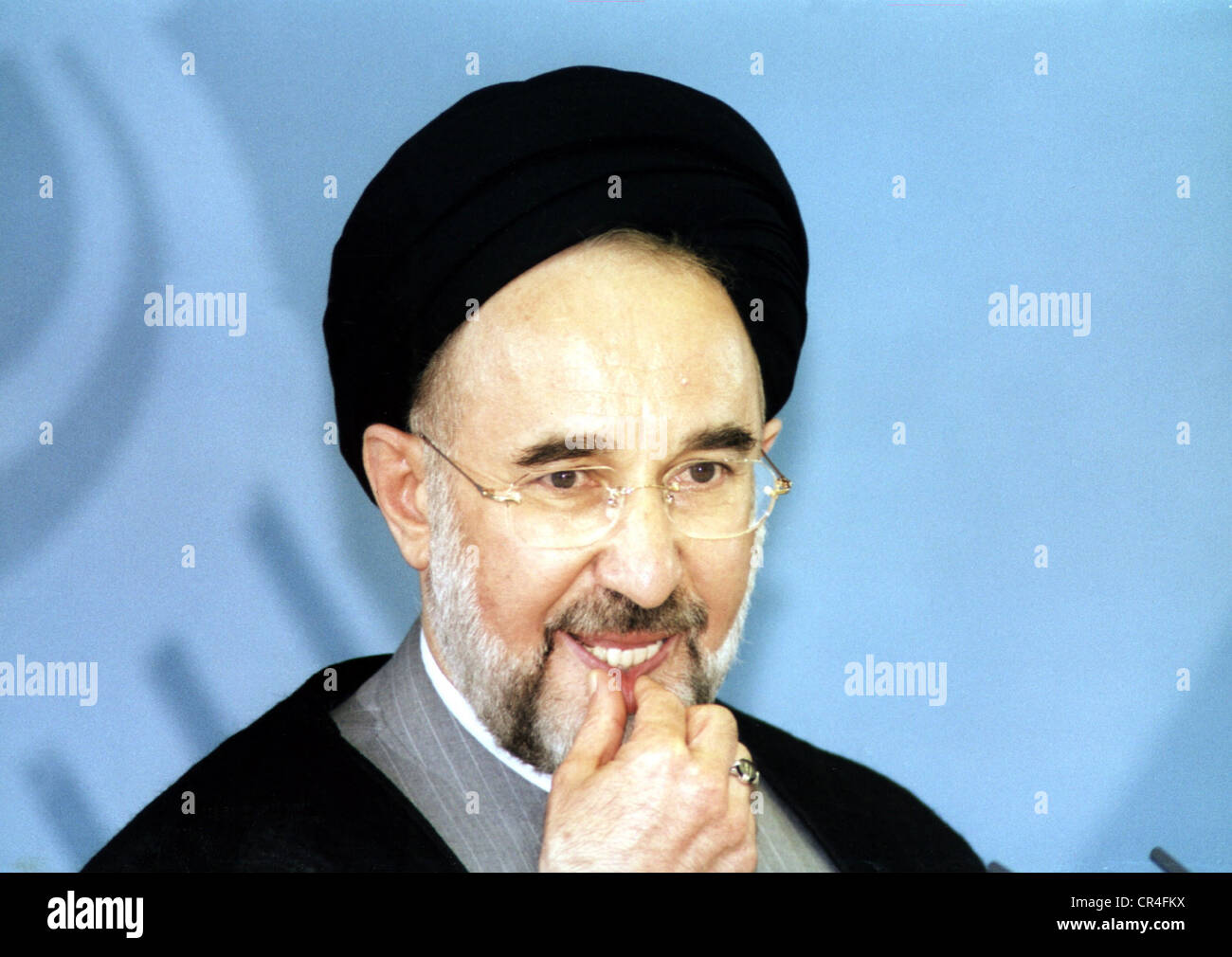Mohammad Khatami: Iran's Reformist President & Enduring Legacy
Table of Contents
- Biography: The Early Life of Mohammad Khatami
- Personal Data: Mohammad Khatami
- The Stunning Victory: Mohammad Khatami's Ascent to the Presidency
- The Reform Agenda: Promises of Change and a More Tolerant Society
- A New Diplomatic Vision: Dialogue Among Civilizations
- Challenges and Opposition: The Struggle for Reform
- Legacy and Post-Presidency Influence
Biography: The Early Life of Mohammad Khatami
Mohammad Khatami was born on October 14, 1943, in the small town of Ardakan, located in central Iran. Hailing from a prominent clerical family, his upbringing was deeply rooted in religious scholarship and political activism. His father, Ayatollah Ruhollah Khatami, was a respected cleric and a close associate of Ayatollah Ruhollah Khomeini, the founder of the Islamic Republic of Iran. This familial background provided Mohammad Khatami with early exposure to both religious teachings and the burgeoning political movements that would eventually reshape Iran. Khatami pursued his higher education in Qom, a significant center for Shi'a Islamic scholarship, where he studied Islamic sciences. He later enrolled at Isfahan University, where he earned a degree in Western philosophy. This dual academic background, encompassing both traditional Islamic studies and modern Western thought, would later inform his unique political philosophy, which sought to reconcile Islamic principles with concepts of democracy and individual rights. Before his presidency, Mohammad Khatami held several key positions within the Islamic Republic. Following his resignation in 1992 from his post as Minister of Culture and Islamic Guidance, a role he held for a decade, he was appointed as cultural advisor to President Akbar Hashemi Rafsanjani. Concurrently, he served as the head of Iran's National Library, a position that further cemented his reputation as an intellectual and a proponent of cultural development. In 1996, he was appointed as a member of the High Council for Cultural Revolution by Iran's Supreme Leader, Ayatollah Ali Khamenei. As president, he would later become the head of this influential council, underscoring his deep involvement in shaping Iran's cultural and educational policies.Personal Data: Mohammad Khatami
| Full Name | Seyyed Mohammad Khatami |
| Date of Birth | October 14, 1943 |
| Place of Birth | Ardakan, Yazd Province, Iran |
| Spouse | Zahra Eshraghi (married 1974) |
| Children | Two daughters, one son |
| Education | Islamic Sciences (Qom), Western Philosophy (Isfahan University) |
| Political Affiliation | Reformist faction |
| Presidential Term | 1997 – 2005 |
Mohammad Khatami is married to Zahra Eshraghi, a feminist human rights activist and granddaughter of Ruhollah Khomeini, the founder of the Islamic Republic of Iran. He got married in 1974 and has two daughters and a son. His family ties extend into prominent political circles; for instance, Khatami's other brother, Ali Khatami, a businessman with a master's degree in industrial engineering from Polytechnic University in Brooklyn, served as the president's chief of staff, highlighting the close-knit nature of his political and personal life.
The Stunning Victory: Mohammad Khatami's Ascent to the Presidency
Mohammad Khatami arrived on the political scene in Iran with a stunning victory in the 1997 presidential elections. Running on a platform of liberalization and reform, Khatami won the support especially of young men and women, who were yearning for greater social freedoms and a more open society after years of conservative rule. His campaign resonated deeply with a populace eager for change, promising the implementation of a democratic and more tolerant society, the rule of law, and the improvement of social rights. The election of Mohammad Khatami in 1997 marked what many observers, including BBC News Online, described as the beginning of democratic reform inside Iran. He was the overwhelming favorite in the country's presidential elections on June 8, reflecting a widespread desire for a different direction. His moderate stance, intellectual background, and promises of a more inclusive government appealed to a broad spectrum of voters, from students and intellectuals to women and segments of the working class. Mr. Khatami promised Iranians change, and specifically addressed the concerns of women, who had long felt marginalized in society. His victory was not just a political upset; it was a cultural phenomenon. It signaled a clear public mandate for reform, challenging the entrenched conservative establishment. The sheer enthusiasm surrounding his election, with supporters surrounding him on election day, underscored the profound hope he inspired. This moment represented a pivotal turning point, demonstrating the Iranian people's capacity and desire for political evolution and reform from within the existing system.The Reform Agenda: Promises of Change and a More Tolerant Society
Upon taking office, Mohammad Khatami embarked on his ambitious reform program, aiming to fulfill the promises he made during his campaign. His agenda was multifaceted, touching upon domestic policies, economic challenges, and a revolutionary approach to foreign relations. The core of his vision was to foster a more open, democratic, and tolerant society within the framework of the Islamic Republic.Domestic Policy and Social Rights
At the heart of Khatami's domestic policy was the commitment to the rule of law and the improvement of social rights. He championed greater freedom of expression, civil society engagement, and political participation. This led to a flourishing of independent newspapers and magazines, a vibrant intellectual discourse, and increased space for public debate. Women, in particular, found an advocate in Mohammad Khatami, who had specifically promised to address their concerns during his campaign. His presidency saw a push for greater opportunities and rights for women, though progress was often met with resistance. He sought to empower civil society organizations and encourage a more active role for citizens in governance. The atmosphere under Khatami was palpably different, characterized by a sense of hope and the belief that gradual, systemic change was possible. However, the path of reform was fraught with difficulties, as the reformist movement often found itself at odds with the more conservative elements of the establishment.Navigating Economic Challenges
Beyond social and political reforms, Mohammad Khatami also had to grapple with significant economic challenges facing Iran. A year into his first term as president of Iran, Khatami openly acknowledged the country's economic difficulties, stating that the economy was "chronically ill." This candid admission highlighted the deep-seated structural issues, including high unemployment, inflation, and a heavy reliance on oil revenues, that plagued the nation. His administration attempted to implement economic reforms aimed at diversification, privatization, and attracting foreign investment. However, these efforts were often hampered by political infighting, bureaucratic inertia, and the broader geopolitical climate. Despite the challenges, Khatami's government made strides in some areas, laying the groundwork for future economic development, even if the immediate impact was not as transformative as many had hoped. The struggle to balance the demands of reform with the realities of economic hardship remained a persistent theme throughout his two terms.A New Diplomatic Vision: Dialogue Among Civilizations
Perhaps one of Mohammad Khatami's most significant and globally recognized contributions was his innovative approach to foreign policy, encapsulated in his concept of "Dialogue Among Civilizations." This idea offered a profound alternative to prevailing geopolitical theories and sought to redefine Iran's engagement with the international community.Fostering International Relations
During Khatami's presidency, Iran's foreign policy began a process of moving from confrontation to conciliation. This marked a deliberate shift from the more isolationist and revolutionary stance that had characterized Iran's foreign relations in previous decades. Khatami's administration actively sought to reduce tensions with Western nations and improve ties with regional neighbors. His diplomatic efforts led to increased engagement with various countries. For instance, in December 1999, General Pervez Musharraf, then Chief Executive of Pakistan, visited Iran. President Khatami welcomed his visit, stating that ties between Iran and Pakistan were "profound and unbreakable," noting the two countries' common cultural and Islamic foundations. This exemplifies his commitment to building bridges and fostering healthy relations based on mutual respect. Similarly, his meeting with Vladimir Putin, President of Russia, in Sa'd Abad Palace, underscored Iran's efforts to diversify its international partnerships and strengthen its position on the global stage through diplomacy rather than antagonism.The Enduring Concept of Dialogue Among Civilizations
In Khatami's notion of foreign policy, there was no clash of civilizations; he favored instead a dialogue among civilizations. This concept was not merely a diplomatic slogan but a philosophical framework for international relations. Former Iranian president Mohammad Khatami introduced the idea of dialogue among civilizations as a direct response to Samuel P. Huntington's influential theory of a "clash of civilizations," which posited an inevitable conflict between different cultural blocs. Khatami's proposal, initially inspired by Austrian philosopher Hans Köchler who in 1972 had suggested an international conference on the dialogue between different civilizations, gained significant international traction. It was adopted by the United Nations, which declared 2001 as the "United Nations Year of Dialogue Among Civilizations," providing a global platform for Khatami's vision. He asserted that dialogue does not equate to surrender but serves the public good, emphasizing the importance of negotiation and reform in a message delivered to the sixth congress of the Isargaran (Devotees) Party. This intellectual contribution positioned Iran not just as a regional player but as a proponent of a new paradigm for global understanding and cooperation, moving beyond narrow national interests to embrace a shared human future.Challenges and Opposition: The Struggle for Reform
Despite the widespread popular support and the ambitious reform agenda of Mohammad Khatami, his presidency was constantly challenged by powerful conservative forces within Iran's political system. After taking office, Khatami faced fierce opposition from his powerful opponents within the unelected institutions, particularly the judiciary and the Revolutionary Guard Corps, which maintained significant control over key aspects of Iranian society.Media Suppression and Political Trials
One of the most visible signs of this struggle was the crackdown on the burgeoning reformist press. Under Khatami, more than 50 newspapers were banned, and satellite dishes, which provided access to international media, were confiscated. This suppression aimed to curb the flow of information and limit the public discourse that Khatami's reforms had initially fostered. The judiciary, often seen as a stronghold of conservative power, played a central role in these actions. Furthermore, in November, Iran's judiciary began the largest trial of political dissidents in over two decades. These trials targeted journalists, intellectuals, and activists who were seen as pushing the boundaries of the Islamic Republic, signaling a clear message from the hardliners that the pace and scope of reform would be dictated by them, not by the elected president. This period highlighted the inherent tension between the reformist government and the deeply entrenched conservative establishment, which viewed Khatami's liberalization efforts as a threat to the foundational principles of the Islamic Republic. It is important to note that the provided data states that Khatami was a member of the ruling council at the time, and intimately involved in passing the death sentences, a point that is often raised by critics to highlight the complexities and contradictions within his reformist image. This particular piece of information, if accurate, points to the intricate power dynamics and the difficult compromises made within the Iranian political system, even by those perceived as reformers.Accusations and Criticisms
Mohammad Khatami also faced significant personal and political attacks. He has been accused of being a foreign agent multiple times. In a lengthy 2008 report published by the official Islamic Republic News Agency (IRNA), it was claimed that Khatami participated in a meeting because "they wanted to transform Khatami into an Islamic version of Mikhail Gorbachev" and that he was "executor of the plot to replace religious rule with secularism." These accusations, often propagated by hardline factions, aimed to discredit him and his reformist movement by portraying them as foreign-influenced and anti-Islamic. Such narratives underscore the deep ideological divisions within Iran and the constant struggle for legitimacy and power. These criticisms, whether substantiated or not, demonstrate the intense scrutiny and opposition he faced throughout his career, extending even beyond his presidency.Legacy and Post-Presidency Influence
Mohammad Khatami's presidency concluded in 2005, when he was succeeded by Mahmoud Ahmadinejad, a hardliner whose election marked a significant shift away from the reformist era. This transition underscored the fragility of the reform movement and the enduring power of conservative forces in Iran. The opportunity for further liberalization, which many had hoped for under Khatami, seemed to diminish with Ahmadinejad's rise. Despite leaving office, Mohammad Khatami has remained a significant figure in Iranian politics, albeit one whose influence has been carefully managed by the establishment. As a leading reformist figure, he continues to advocate for change, negotiation, and dialogue. His emphasis on the importance of negotiation and reform, asserting that dialogue does not equate to surrender but serves the public good, resonates with many Iranians who still aspire to a more open and democratic society. In recent years, Khatami has often found himself in a difficult position, balancing his reformist ideals with the realities of Iran's political constraints. For instance, Iran’s former president Mohammad Khatami abstained from voting in recent elections, a sign that he joined the popular boycott of the election. This act of abstention, by a figure who once symbolized hope for democratic participation, highlights the deep disillusionment felt by many reform-minded Iranians with the electoral process and the limited scope for genuine change within the system. Mohammad Khatami's legacy is complex and multifaceted. He is remembered as the president who dared to dream of a more tolerant and democratic Iran, who opened up space for civil society, and who championed a groundbreaking foreign policy based on dialogue rather than confrontation. His intellectual contributions, particularly the "Dialogue Among Civilizations," continue to be relevant in a world grappling with cultural and religious divides. While his reform agenda faced formidable obstacles and ultimately did not achieve all its goals, his presidency irrevocably altered the political landscape, demonstrating the strong public appetite for change and setting a benchmark against which future Iranian leaders are often measured. He paved the way for discussions and aspirations that continue to shape Iran's political evolution, even as the country navigates its current challenges under leaders like Masoud Pezeshkian, who is also a member of the reformist faction and currently serves as the ninth president of Iran since 2024. Khatami's enduring influence lies in his ability to articulate a vision of reform that, despite its limitations, continues to inspire hope for a different future for Iran. In conclusion, Mohammad Khatami's time as president was a period of intense hope, significant challenges, and enduring intellectual contributions. His vision of a reformist Iran, committed to the rule of law, social rights, and international dialogue, left an indelible mark on the nation's political consciousness. While the full realization of his reformist dreams remains a work in progress, his legacy continues to inspire and inform the ongoing struggle for a more open and just society in Iran. What are your thoughts on Mohammad Khatami's impact on Iran and the world? Share your perspectives in the comments below, or explore our other articles on Iranian politics and history to deepen your understanding of this complex nation.- Lyn May Before She Was Famous A Transformation Story
- The Ultimate Guide To Charlotte Flair Leaks Uncovering The Truth
- Jasmine Crocketts Husband Meet The Man Behind The Politician
- Kevin Surratt Jr An Insight Into His Marriage With Olivia
- The Strange And Unforgettable Mix Sushiflavored Milk Leaks

Iran president invited to Saudi – Middle East Monitor

Former president of iran hi-res stock photography and images - Alamy

President of iran 1997 2005 hi-res stock photography and images - Alamy